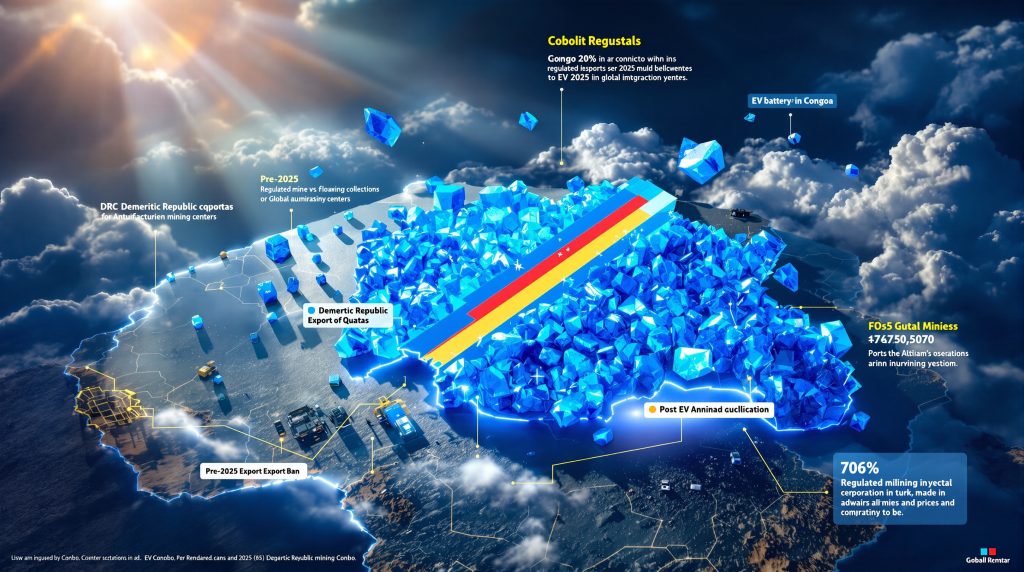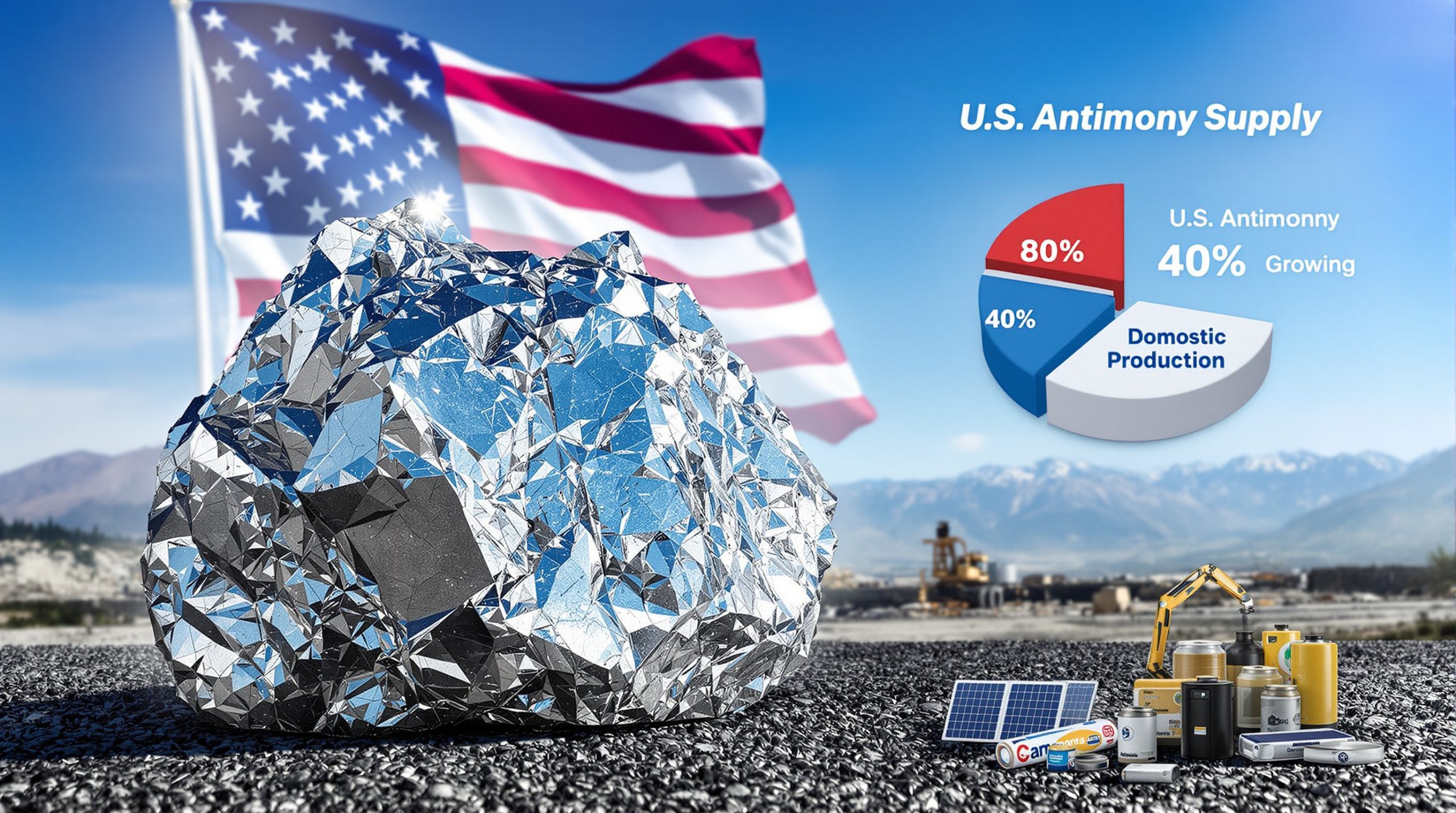DRC Cobalt Export Quotas: Reshaping Global Supply Chain Dynamics
The Democratic Republic of Congo (DRC) will introduce a significant policy shift by replacing its controversial cobalt export ban with a structured quota system beginning October 16, 2025. This strategic transition represents a new approach to managing the country's vast cobalt resources, which account for approximately 70% of global production according to the U.S. Geological Survey's 2024 Mineral Commodity Summaries.
The New Quota Framework Details
Under the newly announced framework, miners will be permitted to export up to 18,125 tonnes of cobalt for the remainder of 2025, with annual quotas established at 96,600 tonnes for both 2026 and 2027. The DRC's mining regulator has structured these allocations based on several key principles:
- Pro-rata Distribution: Quotas will be allocated based on companies' historical export volumes
- Strategic Reserve: 10% of export volume will be earmarked for national projects
- Regulatory Oversight: The mining regulator maintains authority to adjust allocations based on market conditions
- Excess Management: Mechanisms established for repurchasing cobalt stocks exceeding company quotas
This quota system represents a calculated balance between maintaining market stability and maximizing economic benefits for the DRC, following the complete export ban that had been in place since February 2023.
Why Did the DRC Implement Export Restrictions?
Market Stabilization Strategy
The DRC's export policies for cobalt have evolved directly in response to significant market challenges. The initial export ban implemented in February 2023 came after cobalt prices plummeted to their lowest level in nine years, creating unsustainable market conditions for producers.
| Period | Policy Approach | Market Trigger | Industry Impact |
|---|---|---|---|
| Feb 2023 – Oct 2025 | Complete Export Ban | Prices at 9-year low | Force majeure declarations by major producers |
| Oct 2025 onward | Quota System | Continued market volatility | Controlled supply management |
The extended ban, confirmed in June 2025, forced major mining companies including Glencore and China-based CMOC Group to declare force majeure on shipments, significantly disrupting global supply chains and highlighting the DRC's market influence.
Addressing Supply Chain Vulnerabilities
Beyond price stabilization, the quota mechanism serves multiple strategic objectives for the DRC government:
- Reducing market volatility through controlled supply release
- Limiting the influence of unregulated production channels
- Mitigating the impact of illicit mining operations
- Addressing security concerns related to armed groups, particularly M23 rebels in eastern DRC
- Creating leverage for developing local processing capacity
According to industry analysts, the DRC government has grown increasingly concerned about how unregulated mining activities have contributed to both market instability and regional security challenges.
How Are Major Mining Companies Responding?
Divergent Industry Reactions
The transition to a quota system has elicited varied responses from key industry players operating in the DRC.
Glencore's Position
Glencore, one of the world's largest cobalt producers through its DRC operations, has reportedly taken a supportive stance on the quota approach. According to Reuters reporting, the company views the system as potentially beneficial for several reasons:
- Improved inventory management capabilities
- Potential for price stabilization through controlled supply
- More predictable operational planning horizons
Simultaneously, Bloomberg reports that Glencore is exploring divestment options for its Kamoto Copper Company (KCC), a major copper-cobalt producer in Congo that has faced operational difficulties and disputes with the government over royalties during the downturn in cobalt prices.
CMOC Group's Stance
China-based CMOC Group, another significant player in DRC cobalt production, has taken a different position:
- Has consistently opposed export restrictions
- Previously urged Kinshasa to lift the ban entirely in May 2025
- Expressed concerns about operational constraints and financial impacts
Strategic Corporate Adjustments
The extended export restrictions have catalyzed broader strategic shifts among major producers operating in the DRC:
- Ownership Restructuring: Several companies are evaluating their long-term investment positions in DRC assets
- Operational Adaptations: Production scheduling and mine planning have been modified to align with quota limitations
- Supply Chain Reconfiguration: Development of alternative processing routes and inventory management approaches
The market has also seen increased interest in Cobalt Blue expansion and cobalt assets outside the DRC, with analysts noting accelerated exploration and development activities in more stable jurisdictions, though these alternatives represent a small fraction of global resources.
What Are the Global Implications of DRC's Cobalt Quotas?
Impact on Battery Supply Chains
The DRC's export quotas will have far-reaching consequences for industries dependent on cobalt, particularly as global demand for electric vehicles continues to grow under various national electrification mandates.
- Electric Vehicle Manufacturing: Battery producers face potential supply constraints and pricing uncertainty
- Energy Storage Systems: Grid-scale projects may encounter increased cost volatility
- Consumer Electronics: Smartphone and laptop manufacturers must adjust procurement strategies
According to the International Energy Agency's 2024 Critical Minerals Market Outlook, cobalt demand could increase by 40-60% by 2030, primarily driven by battery applications. The DRC's quota system will significantly influence how this demand is met.
Geopolitical Dimensions
The quota system introduces new dynamics in the global critical minerals energy transition landscape, particularly as tensions between major economies over resource security intensify:
- China-DRC Relations: Chinese companies control significant portions of DRC cobalt production and processing, creating potential leverage points
- Western Supply Security: The quotas present challenges for diversification efforts by EU and US manufacturers under President Trump's critical minerals initiatives
- Regional Stability: Central African economic and political stability may be influenced by the effectiveness of the quota implementation
Industry analysts note that the DRC's approach creates new uncertainties in global supply chains already strained by various US‑China trade tensions and trade restrictions affecting critical minerals.
How Does Artisanal Mining Factor Into the Quota System?
Formalizing Informal Production
The DRC's cobalt sector includes significant artisanal and small-scale mining (ASM) operations, which have historically operated outside formal regulatory frameworks. The quota system specifically addresses this sector:
- Regulatory Integration: The system aims to bring greater formality to ASM production
- EGC's Exclusive Rights: The state-owned Enterprise Générale du Cobalt has been granted exclusive rights to export artisanal cobalt
- Traceability Initiatives: Enhanced efforts to increase transparency in artisanal supply chains are being implemented
According to the DRC's mining regulator, addressing artisanal mining is critical both for improving market function and addressing humanitarian concerns that have plagued the sector.
Social and Environmental Considerations
The quota system intersects with broader concerns about cobalt production practices:
- Labor Practices: Ongoing challenges with working conditions in artisanal mining require comprehensive solutions
- Community Impact: Mining communities dependent on informal extraction face economic uncertainty during transition
- Environmental Management: The formalization process presents opportunities to improve environmental standards
The Responsible Minerals Initiative estimates that 15-30% of DRC cobalt comes from artisanal sources, highlighting the significance of effectively integrating this production into the formal quota system.
What Market Factors Influenced the Shift to Quotas?
Supply-Demand Dynamics
The cobalt market has experienced significant volatility, influenced by multiple factors beyond the DRC's control:
| Factor | Impact on Market | Relationship to Quota Decision |
|---|---|---|
| Indonesian Production | Increased global supply | Reinforced need for DRC supply management |
| EV Adoption Rates | Fluctuating demand forecasts | Created uncertainty about future requirements |
| Battery Chemistry Evolution | Varying cobalt intensity | Challenged long-term market predictions |
| Stockpile Levels | Inventory overhang | Necessitated controlled release of new supply |
Indonesia's emergence as a secondary cobalt producer has been particularly significant. The country's production increased approximately 300% between 2022 and 2024, according to U.S. Geological Survey data, creating additional pressure on global markets.
Price Stabilization Objectives
The quota system aims to achieve a more balanced market through several mechanisms:
- Price Recovery: Creating conditions for sustainable pricing above production costs
- Investment Certainty: Providing clearer outlook for mining project development
- Value Retention: Maximizing economic return from the DRC's strategic resource
Traders linked to major producers have emphasized the importance of achieving more balanced cobalt markets before fully liberalizing exports, noting persistent oversupply pressures from both the DRC and Indonesia.
How Will the Quota System Evolve?
Regulatory Flexibility
The DRC's mining regulator has built adaptability into the quota framework, allowing for adjustments based on market developments:
- Market-Responsive Adjustments: Authority to modify allocations based on changing conditions
- Processing Incentives: Potential quota increases tied to local refining investments
- Strategic Reserves Management: Capability to repurchase excess cobalt stocks beyond company quotas
This flexibility represents recognition that cobalt markets remain unpredictable, particularly as battery technologies and global demand patterns continue to evolve.
Long-Term Strategic Vision
The quota system represents one element of a broader minerals strategy for the DRC:
- Value Addition: The government has stated intentions to encourage development of domestic processing capacity
- Economic Diversification: Using mineral wealth to support broader economic development goals
- Supply Chain Influence: Leveraging the DRC's dominant position to shape global cobalt markets
The mining regulator has indicated that future quota adjustments may be linked to investments in local refining and processing infrastructure, creating incentives for vertical integration within the country.
What Are the Indicators of Success for the Quota System?
Measuring Effectiveness
Several metrics will determine whether the quota approach achieves its objectives:
- Price Stability: Reduction in extreme cobalt price volatility represents a primary goal
- Production Formalization: Decreased proportion of unregulated mining would indicate improved governance
- Local Processing: Increased investment in DRC-based refining capacity would demonstrate value-chain development
- Revenue Generation: Enhanced economic returns from the cobalt sector for the DRC government
- Market Balance: Alignment of global supply with demand requirements
Industry analysts suggest that a successful quota system would need to balance price support with sufficient supply to prevent manufacturers from accelerating substitution efforts.
FAQ: DRC Cobalt Export Quotas
How long will the DRC's cobalt quota system remain in place?
The current framework establishes quotas through 2027, with the potential for extension or modification based on market conditions and strategic priorities.
Will the quotas affect cobalt prices globally?
The controlled release of DRC cobalt is likely to influence global pricing, potentially supporting price stability if properly calibrated to demand patterns.
How are quotas allocated among mining companies?
Quotas are distributed proportionally based on companies' historical export volumes, with 10% reserved for national strategic projects.
Can companies exceed their allocated quotas?
The mining regulator has established mechanisms to repurchase excess cobalt stocks that exceed company quotas.
How does the quota system address artisanal mining?
The system aims to bring greater control and formalization to artisanal production, with the state-owned EGC having exclusive rights to export artisanally-mined cobalt.
What happens if global demand changes significantly?
The regulatory framework includes provisions for the mining regulator to adjust allocations based on market conditions and demand shifts.
Future Outlook and Market Evolution
The introduction of the DRC's export quotas for cobalt marks a significant shift in how the world's largest cobalt producer manages its resources. As battery technologies continue to evolve and demand patterns shift, the flexibility built into the quota framework will be tested.
Industry participants are watching closely to see whether the quota system will achieve its dual objectives of market stabilization and domestic economic development. The success or failure of this approach will have lasting implications for global supply chains, particularly as economies worldwide continue transitioning toward electrification and renewable energy systems.
For battery manufacturers, automotive companies, and electronics producers, the DRC's policy shift requires careful supply chain planning and potentially increased focus on recycling, substitution, and diversification strategies. While alternative cobalt sources exist, none can currently replace the DRC's dominant position in global supply.
Furthermore, as the battery metals outlook continues to evolve, manufacturers will need to navigate increasingly complex critical supply chain challenges created by the intersection of resource nationalism, sustainability requirements, and technological change.
Disclaimer: This article contains market analysis and forward-looking statements regarding mineral markets and supply chains. All projections involve uncertainty and readers should consult with qualified financial and industry advisors before making investment decisions based on this information.
Want to Stay Ahead of Critical Mineral Market Developments?
Discovery Alert's proprietary Discovery IQ model delivers real-time notifications on significant ASX mineral discoveries, including those related to critical minerals like cobalt. Visit our discoveries page to understand how major mineral discoveries can generate substantial returns for investors who receive early alerts.




